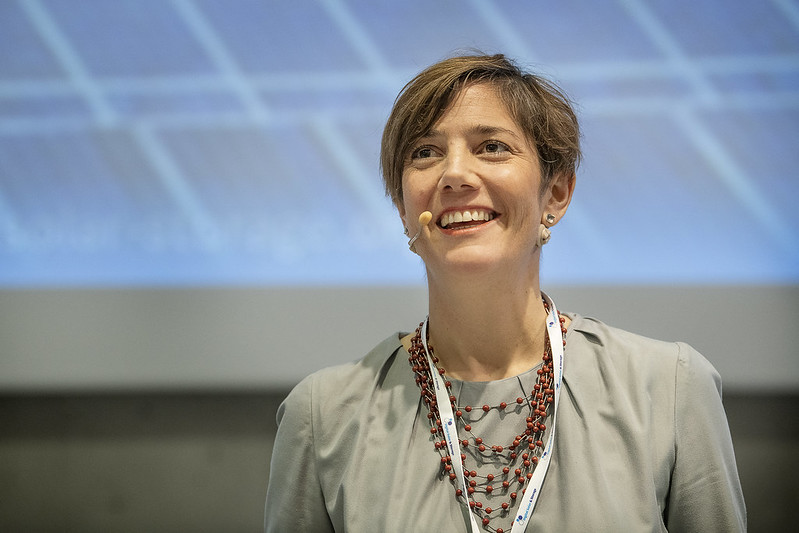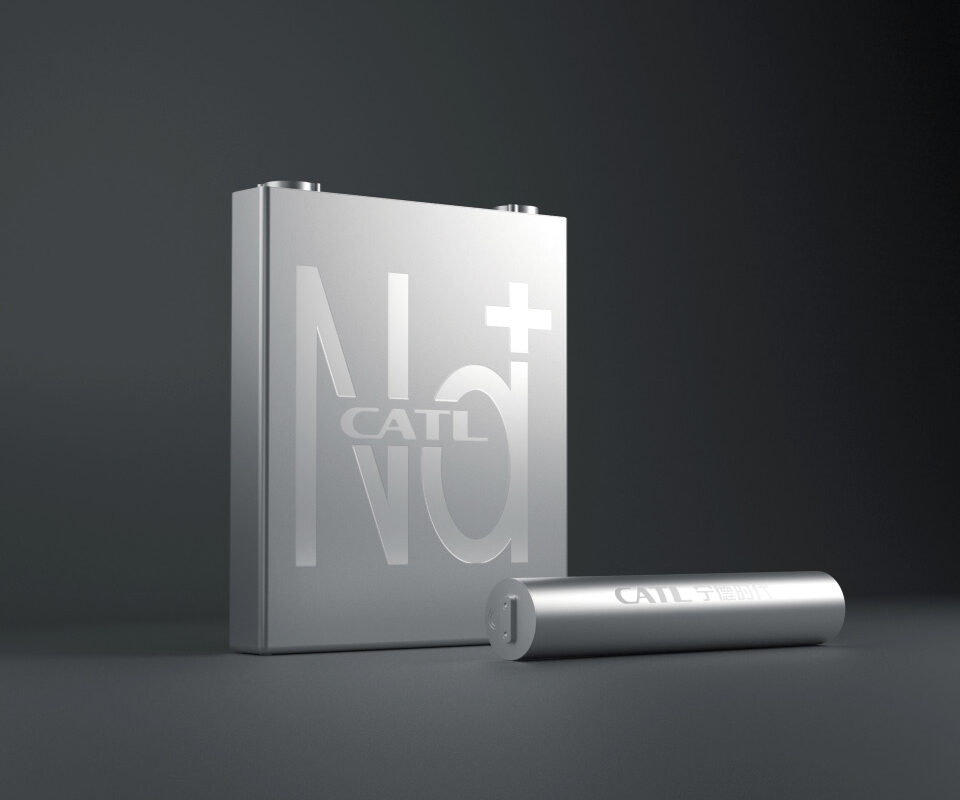Imagine waking up in a climate-neutral Europe in 2050. It’s a beautiful morning: sunlight streams through your windows, providing light, warmth, and energy to your home. The solar panels on your rooftop, and building-integrated solar materials, supply you with cheap and clean electricity, while a storage system captures excess power and saves it for a cloudy day. Your energy bill has never been cheaper, and more importantly, it is entirely sustainable. As you leave for work, you unlock your solar-powered electric vehicle that has been charging outside your house, with power provided by your home installations as well as from the grid. You enjoy the silence of the morning commute – as buses, trams, and trains in your city are also solar-powered – and roll down your window to breathe in the fresh air. You arrive to your job in the solar sector, one of nearly 12 million people around the world who now work with solar energy, invigorated to continue the development of solar in Europe…
Entirely possible
This vision of the future is entirely possible, and as Ursula von der Leyen begins her tenure as President of the European Commission, with climate at the heart of her agenda, it is an opportune time to consider how we can get there. As the Commission prepares its strategy for a European Green Deal, it is important to understand how solar can deliver on ambitious climate targets. Committing to climate neutrality by 2050 is a game-changer for Europe, as it requires a paradigm shift in the way we live, consume, produce, and travel as European citizens. It also offers significant opportunities to businesses and industries to prepare for a sustainable future, and enjoy the benefits that renewable energy offers. Europe has always been a world leader in renewable technologies, and can remain at the vanguard of clean energy by becoming the first-ever climate neutral continent.
As the most cost-effective and versatile energy source, solar has a massive role to play in Europe’s energy transition. In the last year alone, the demand for solar has increased by roughly 110%, with around 20 GW of installed capacity. This figure is expected to grow in the coming years, but we are only just beginning to harvest solar’s potential in Europe. Solar is crucial to delivering a successful European Green Deal, and we have developed seven solutions, of equal priority, for the newly-elected European Commission. All of these solar solutions will require the mobilization of substantial public and private investment; new legislation on Sustainable Finance is an essential precondition to an increased roll-out of solar installations.
- First, in line with SolarPower Europe's #Solar4Buildings campaign, we propose that solar should be installed on all new and renovated residential, commercial, and industrial buildings in the EU. Currently 90% of European rooftops are unused, and fitting this space with solar offers the potential to save up to seven million tonnes of CO2 each year, producing at least 680 TWh of clean electricity supply. Further, SolarPower Europe along with 11 major associations, recently signed a joint letter to the new Commission, urging an action plan to address the integrated renovation of all European buildings. The letter proposes that the EU building stock must be kept at the centre of the Green Deal, as it accounts for 36% of the region’s CO2 emissions and approximately half of total European energy demand. Indeed, Frans Timmermans, Executive Vice-President for the European Green Deal, has stated that green building renovations will be a flagship initiative, and has already proposed in his hearing at the European Parliament to put solar on the rooftops of houses across the EU.
- Second, the solar industry should be established as a strategic value chain, in order to both ensure Europe’s security of supply and maintain industrial leadership in clean energy technologies. EU policymakers have a golden opportunity to implement an industrial strategy that will future-proof a robust and competitive European solar industry, and deliver solutions that can facilitate the Green Deal. In terms of action on this point, SolarPower Europe, along with 17 national solar associations from 13 EU countries, and 10 major European research associations, signed a joint letter, proposing that the Commission put in place a comprehensive industrial strategy for the European solar value chain. President von der Leyen has already promised that industrial policy will go hand in hand with the European Green Deal. She commented, “At the core of [the Green Deal] will be an industrial strategy that enables our businesses – big and small – to innovate and to develop new technologies while creating new markets. We will be global standard setters. This is our competitive advantage. And the best way to ensure a level-playing field.”
- Third, we must increase efforts to transition former coal regions to solar. Coal regions can greatly benefit by transitioning to solar – with untapped solar potential, they are attractive business environments for solar deployment and manufacturing. The EU Platform for Coal Regions in Transition must work with the Clean Energy Industrial Forum to foster synergies between solar industrial policy and the just transition.
- Fourth, it must be a priority to develop skills and training programs to support the energy transition, and adapt the EU Skills Agenda in order to facilitate European solar jobs across key sectors and avoid bottlenecks. In Europe alone, solar can create at least 500,000 highly-skilled jobs by 2030, and 1.7 million by 2050, according to projections from Finland’s LUT University. SolarPower Europe recently joined EuropeOn’s #Skills4Climate campaign, which calls for EU and national policymakers to incentivize technical education and up-skilling, which can facilitate a just transition and ensure no workers are left behind.
- Fifth, there must be support for flexible large-scale solar installations. Solar is a flexible and reliable technology that can provide valuable flexibility services to the grid, more accurately than conventional technologies. The potential of large-scale solar installations to support the transmission grid is largely untapped in Europe, and it is thus urgent to remove existing barriers to their deployment.
- Sixth, we must accelerate the development and roll-out of solar-powered mobility. Solar is highly versatile and can be directly connected to most charging infrastructures, delivering truly sustainable electric mobility. With its highest generation capacity during traditional working hours, it is a particularly attractive option for charging infrastructures located in public and commercial buildings as well as working spaces. We must ensure that appropriate infrastructure is in place to facilitate the roll-out of solar-powered electric vehicles – including personal cars, trucks, trams, and buses.
- Seventh, we should commit to developing solar and renewable hydrogen. In the short term, renewable-based electrification will be the easiest and most cost-efficient means of reaching the EU’s ambitious climate targets. By 2050 however, renewable-based gases will be necessary to decarbonize hard-to-abate sectors, such as industries and heavy transportation. In only 10 years, the price of solar panels has dropped by more than 96%, making it a cost-effective electricity supply for hydrogen production. In order to produce renewable hydrogen, the sector requires political commitment and a regulatory framework to end new investments in conventional generation, redirecting all available financing to the clean technologies of the future.
Solar technologies are market-ready and primed for wide-scale deployment, with the European solar sector prepared to deliver solutions to the new Commission’s climate goals. So, close your eyes, imagine the sun rising on a climate neutral Europe, and know that solar in the EU has entered the right path of getting us there. Our 7 Solar Wonders campaign demonstrates how solar, as the most affordable and versatile clean energy, will help deliver the European Green Deal. Learn more here.
The views and opinions expressed in this article are the author’s own, and do not necessarily reflect those held by pv magazine.
This content is protected by copyright and may not be reused. If you want to cooperate with us and would like to reuse some of our content, please contact: editors@pv-magazine.com.



It has taken about 150 years to establish the Fossil Fuel Industries and supporting Infrastructure… and also included two devastating “World War Years”.
Keeping the above Institutional Inertia in mind, while it would be desirable nay necessary, the fossil lobby refuses to reduce and end it’s “killing ways” and/or accept any role in killing millions and billions of health related procedures annually with accompanying suffering by ALL…. ALL OVER THE GLOBE.
Every five second or so… someone dies due to Pollution around the Globe and every second several persons undergo medical procedures.
So…. while the well funded and financed Fossil Fuel Industries use every “trick in the game” to deny any role on the Negative Health Effects on Humanity (sounds like The Tobacco denials over 25 years back… does it not..??); the “Global Body-Count” just keeps going up.. and up… and up …. as this Fossil Lobby repeatedly tries to derail any massive implementation of Clean, Green and Sustainable Solar Energy.
We should be implementing a Global Turnaround of Climate Change on a War Footing… but we just create Commissions, Inquiries, Volumnous Documents that just make promises and delay De-Fossilization and reduce/stop the “killings and sufferings” that continue…. unabated.
This is the REAL TRAGEDY of the 21st Century.
We have the necessary Technologies and Capabilities, which did not exist a few decades earlier, to turn back the destructive effects wrought on our only home…. Earth.
However…. we prefer our modern “Tower of Babel” than DECLARE A GLOBAL WAR ON CLIMATE CHANGE … NOW…. TO SLOWDOWN AND THEN STOP THE BODY COUNTS OF VICTIMS OF POLLUTION AND RESTORE THE RIGHTS OF HUMANS TO BREATHE CLEAN AND HEALTHY AIR…. AGAIN.
FOR THE SCEPTICS OF THE URGENCY…. ABOUT 50 MILLION DIED DURING THE TWO WORLD WARS THAT LASTED ABOUT 10 YEARS OR ABOUT 5MILLION/YR OR ABOUT THE SAME AS MAN-MADE POLLUTION TODAY… MOSTLY BY BURNING OF FOSSIL FUELS.
YES… WE NEED A GLOBAL WAR ON POLLUTION.